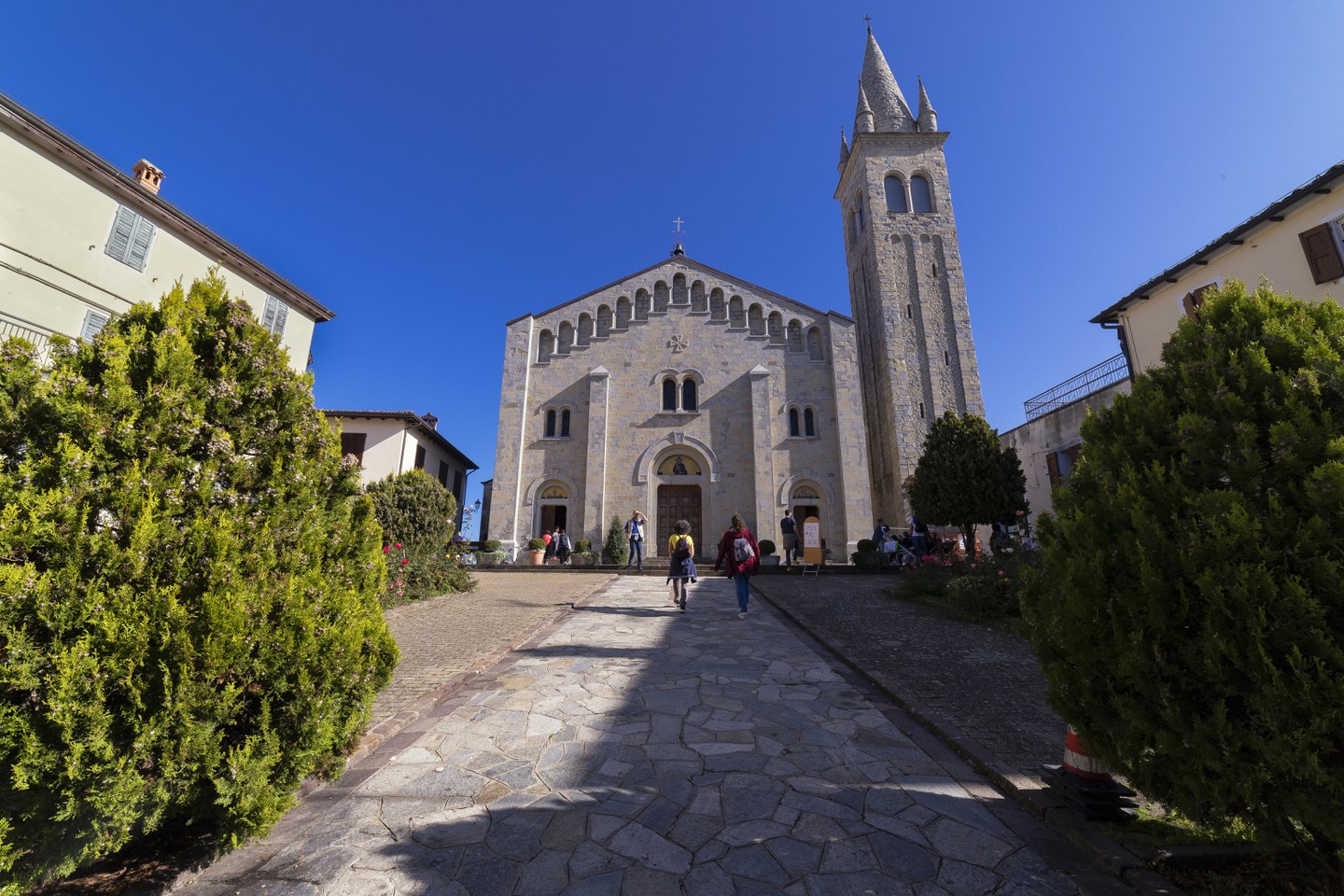Zocca
Founded in 1465 by the Este Duke and Marquis Borso, the town takes it name from the local term zoca (a block of wood or tree trunk) and refers to an area of chestnut tree stumps where a 14th-century marketplace was once held.
Why It’s Worth a Visit
Zocca is a high-spirited village striking for its elegant shops and for its many programs and events for tourists. Two well-equipped public swimming pools are perfect for an enjoyable and relaxing break during the Summer. Zocca is mobbed each year by thousands of fans who come to visit the town where Vasco Rossi was born and spent his early years
Sites You Won’t Want to Miss
The Chestnut and Borlengo Museum
Founded in the 2000s in the former Ospitale di San Giacomo, an ancient hostel for religious pilgrims, the three-room Chestnut and Borlengo Museum describes the history of the chestnut and of the mountain people who cultivated it for their use. Directly outside lie the chestnut groves of Mount San Giacomo. The Borlengo Museum and Workshop is located across from the Chestnut Museum.
The Parish Church of the Sacred Heart of Jesus
In the center of Zocca, you won’t miss the majestic Neo-Romanesque-style façade of the Parish Church of the Sacred Heart of Jesus (Chiesa Parrocchiale del Sacro Cuore di Gesù).
The Verucchia Sanctuary
Known from as early as the 1400s, the Verucchia Sanctuary houses a representation, painted on wood, of the Madonna and Child. Over the years, many miracles have been attributed to the image.
The Birthplace of the Legendary Vasco Rossi
For lovers of Italian music, a pilgrimage here is mandatory. We recommend you consult the tour we’ve created of sites where Rossi was born and took his first steps.
Good Things to Eat
Chestnuts are a typical area specialty, including the “Marrone di Zocca” variety. As in other hill or mountain areas, borlenghi are also made here (a thin flatbread typically served with a lard, rosemary, parmesan cheese, and garlic filling called cunza).
In addition to prosciutto di Modena, whose protected area of production includes Zocca, filled pastas, parmigiano-Reggiano cheese, and balsamic vinegar are other local specialties.
Important Events
The Zocca Hazelnut Festival (Sundays in October)
During the Hazelnut Festival, food stands crowd the streets of the town, selling locally grown chestnuts and other foods made with chestnut flour (including the traditional ciacci, a kind of crepe). In the piazzas, chestnuts roast in special pans over flaming braziers. Performances and an antiques market complete the festive atmosphere.
Nearby
Montalbano and Montecorone
The picturesque villages of Montalbano and Montecorone have maintained their ancient charm.
Montalbano, which stands beneath Monte della Riva, was born as a citadel. It features winding alleyways and a small 18th-century church with a rectory and a bell tower dating to the 1600s.
Montecorone is medieval is its layout, and its stone buildings are ornamented with sandstone doorways and arched windows.
Monteombraro
Monteombraro is part of Zocca and is its most important village. Its typical stone houses are a major feature of the town’s enormous charm. A public swimming pool located here is well-equipped and much used in Summer.
The Sassi di Roccamalatina Regional Park
An Emilia-Romagna Region preserve, the Sassi di Roccamalatina Regional Park covers nearly 5,700 acres between Guiglia, Marano sul Panaro, and Zocca. The “Sassi,” the three rocky pinnacles that give the Park its name, are visible in the interior. Inside the park but near Zocca is the Sasso di Sant’Andrea (St. Andrew's Rock) and the Tane Forest. The Sasso di Sant’Andrea is a large, rocky mass that stands above a small valley south of Montecorone. In Tane Forest, a fascinating grove largely of chestnut trees, sandstone caves can be found.
The Belvedere Trail
The forty-eight kilometers of the Belvedere Trail extend from Casona di Marano to Mount Belvedere (1,140 meters) in Montese.
When’s the Best Time to Visit
Because of the mild climate, late Spring and Summer are the best seasons to take advantage of all this lively area has to offer. The Fall, though, is without doubt the most beautiful time of year in which to experience the traditions of the “chestnut people.”





